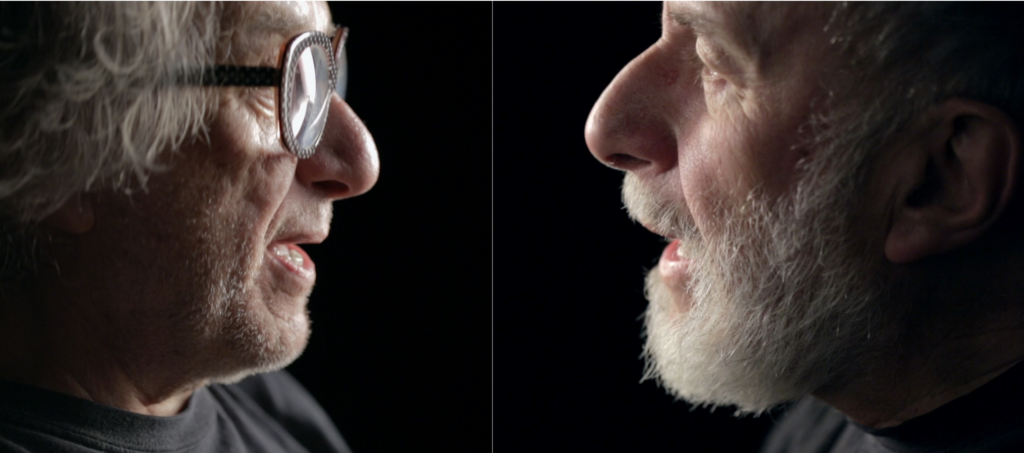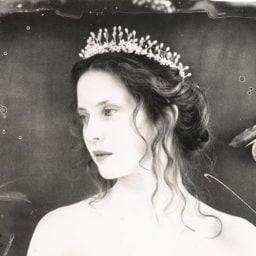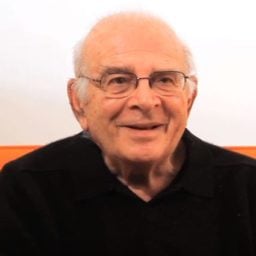The oeuvre of Joel-Peter Witkin is indisputably unique. His celebrated photography, replete with macabre images of dismembered body parts and disfigured sitters, resounds far beyond fine art, from a Nine Inch Nails music video to Alexander McQueen’s runway shows. He may be distinctive; however, he is not alone. In fact, he has an identical twin brother, Jerome Witkin, who is also an artist.
Still, you wouldn’t discern much of a relationship between the two men, who have chosen to spend the majority of their almost 80 years apart.
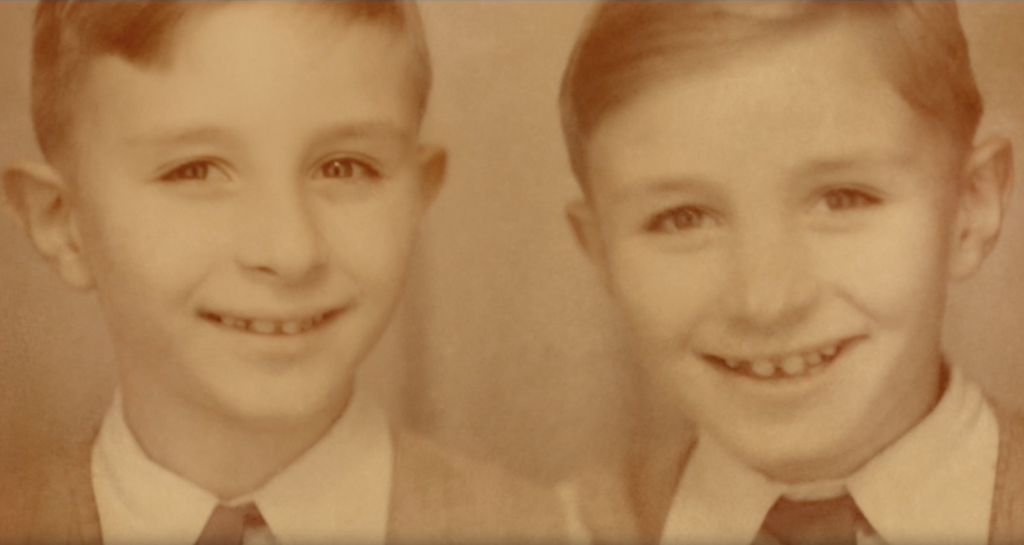
Screenshot of the brothers from Trisha Ziff’s Witkin & Witkin © 212Berlin Films, 2017.
“I don’t know what it means to be a singleton—to be a person without a lookalike person… [But] we were conjoined [only] in a societal way,” Jerome muses in Witkin & Witkin (2017), a recently released documentary about the brothers directed by British photography curator-turned-filmmaker, Trisha Ziff. (The film, which has been making the festival rounds, is showing at the National Gallery in Washington, DC, on Saturday as part of an AFI Docs special screening).
Filmed over the course of four and a half years at five locations across the United States—including the home where the Witkins grew up in Brooklyn, Joel’s home in Albuquerque, and Jerome’s home in Syracuse near the university, where he teaches fine art—Witkin & Witkin chronicles the brothers’ decidedly separate paths as artists and as people.
“It’s a film about relationships,” Ziff told artnet News over the phone. “It’s about dysfunction. It’s about survival and life. It’s about two people who have gone out on their own to reflect on their own humanity.”
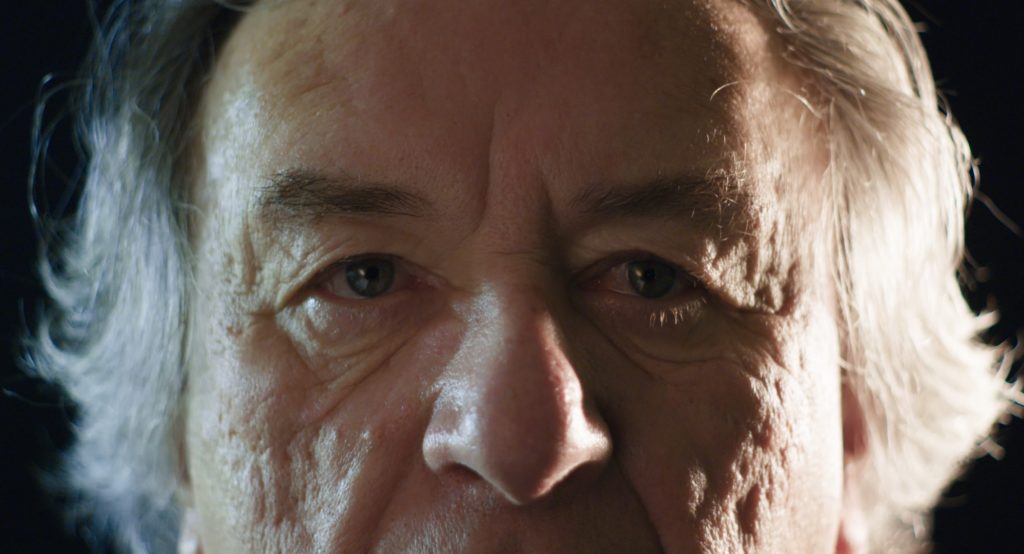
Joel Witkin in Trisha Ziff’s Witkin & Witkin © 212Berlin Films, 2017.
Delving into the brothers’ respective lives and careers, the film unearths the insidious tensions that strained their relationship until it all but dissolved. In some ways, it’s a time-worn tale of good old sibling rivalry, augmented by the surreal condition of sharing every gene in your body with another human being. Identical twins are rare specimens. Indeed, Witkin & Witkin captures something carnivalesque about the phenomenon, setting the stage for both brothers’ gravitation toward society’s underbelly in their chosen artistic subject matter—those misshapen figures glimpsed in the work of surrealist photographer Joel, and for figurative painter Jerome, those who have fallen victim to the evils of humanity.
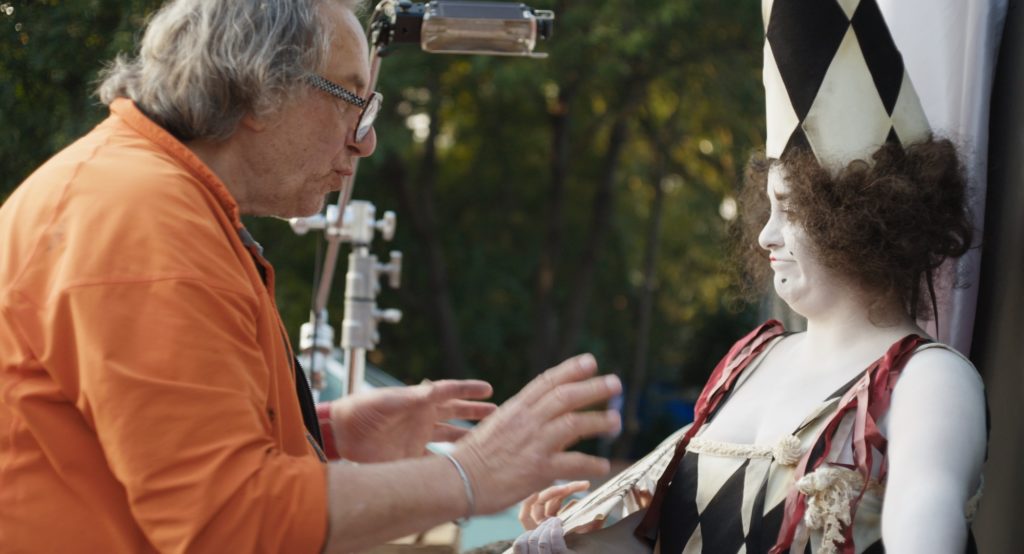
Photographer Joel Witkin in Trisha Ziff’s Witkin & Witkin © 212Berlin Films, 2017.
Viewers will detect echoes of shared art historical references between Joel and Jerome’s work, though Joel largely attributes their divergence to the pursuit of different art forms. “Painting is descriptive, [whereas] I photograph real people in real time,” the photographer told artnet News. “I think that the greatness of photography, as the last medium to arrive in the history of the world, is that it comes closer to life itself.”

Painter Jerome Witkin in Trisha Ziff’s Witkin & Witkin © 212Berlin Films, 2017.
Deeply influenced by his love for their grandmother, who was by all accounts handicapped, Joel’s fascination with physical abnormality comes from a genuine place of love. “God doesn’t make mistakes,” he explained. “If a person is physically different, that difference is part of the masterpiece.”
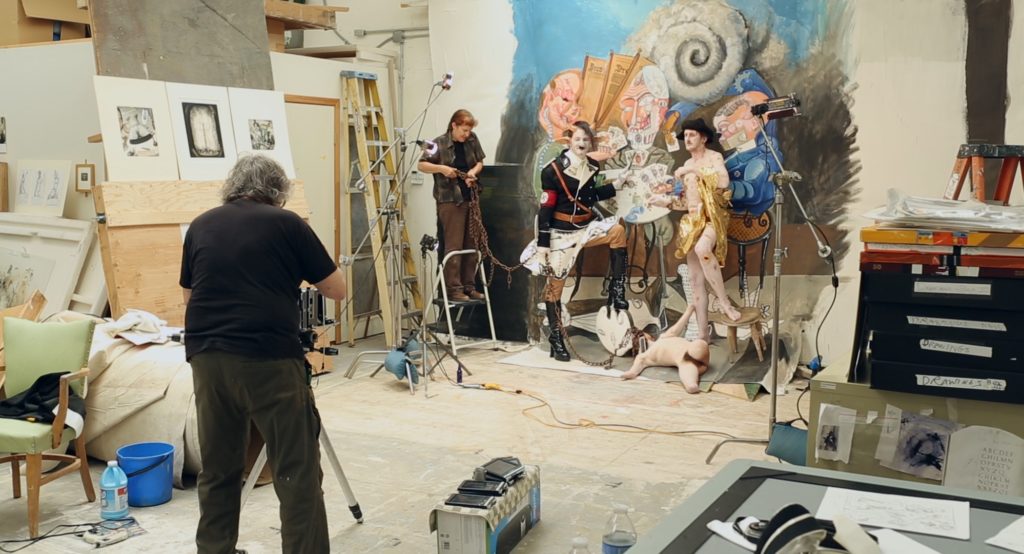
Photographer Joel Witkin in Trisha Ziff’s Witkin & Witkin © 212Berlin Films, 2017.
With a keen eye for the meticulous arrangement of arresting tableaux vivants, Joel celebrates the fleetingness of life with boisterous vigor. Jerome, on the other hand, has been profoundly sobered by experiences with death. Having witnessed the atrocities of World War II and endured the tremendous loss of his 16-year-old son to illness, Jerome’s paintings are cacophonous, albeit masterly, images of anxiety and suffering as inevitable components of the human condition.
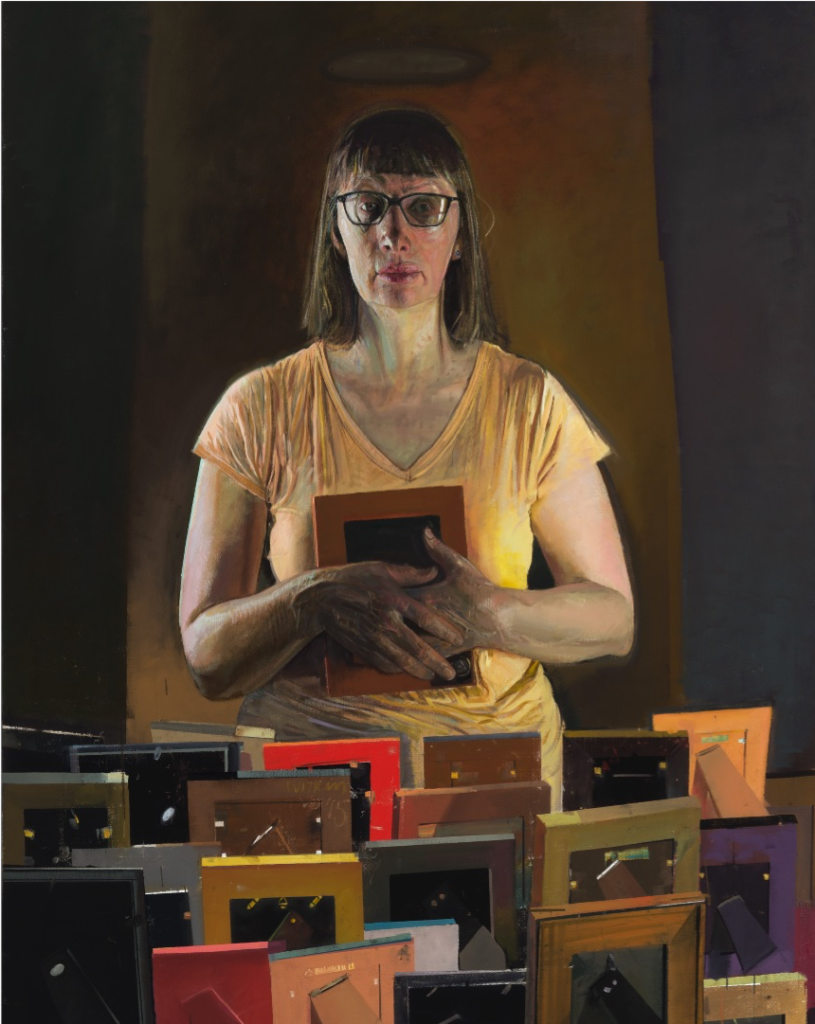
Jerome Witkin’s Madre e hijo. Trisha Ziff’s Witkin & Witkin © 212Berlin Films, 2017. Courtesy of the artist.
“I think they’re both great humanists, but in very different ways,” Ziff says of the twins. “Joel sees beauty where most of us wouldn’t, and Jerome has a social sensitivity to… issues of our time. Joel is the photographer, and photographers document what’s in front of the lens, but he creates these scenes which are much more about people and art. And Jerome…paints what photographers normally document. There is a counterpoint between them.”
Despite decades of estrangement and the brothers’ perceived indifference toward one another, Witkin & Witkin lays bare their indelible connection. In turn, Ziff’s thoughtful eye and intimate knowledge of both artists and their families lend the film touching lucidity.
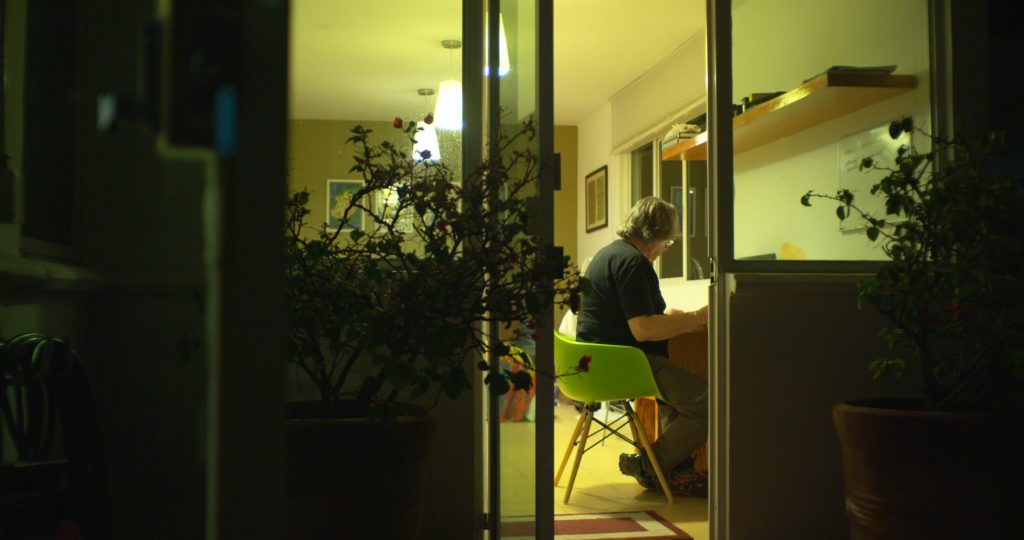
Photographer Joel Witkin in Trisha Ziff’s Witkin & Witkin © 212Berlin Films, 2017.
Ziff was well-acquainted with Joel through a connection, her ex-husband, the renowned photographer Pedro Meyer. She had long admired “the craziness and the creativity” of his process when she serendipitously stumbled upon his brother’s work in Los Angeles. “I fell in love with [Jerome’s] painting,” Ziff recalls. Even though “everyone said they weren’t close,” she wondered what the brothers would say to a documentary about their lives. The project, Ziff promised, would culminate in their first-ever joint museum show in Mexico City.
Also titled “Witkin & Witkin,” and held at the Foto Museo Cuatro Caminos in 2016, the exhibition wasn’t accompanied by a traditional catalogue. Instead, Ziff asked key people in the Witkins’ lives to write about the brothers. Their stories would become the “structure of the script,” and in the absence of notable male figures to contribute, the film Witkin & Witkin is almost entirely informed by women: their sister, their wives, their models, their collectors. As an approach, Ziff said, this was completely intentional.
“In the history of art, women become the enablers,” Ziff explained. “There’s nothing wrong with that, but we don’t see them. They’re invisible. I made their voices visible. I’ve stood these two guys in the middle of a circle, and they’re surrounded by the women who made their lives possible.”
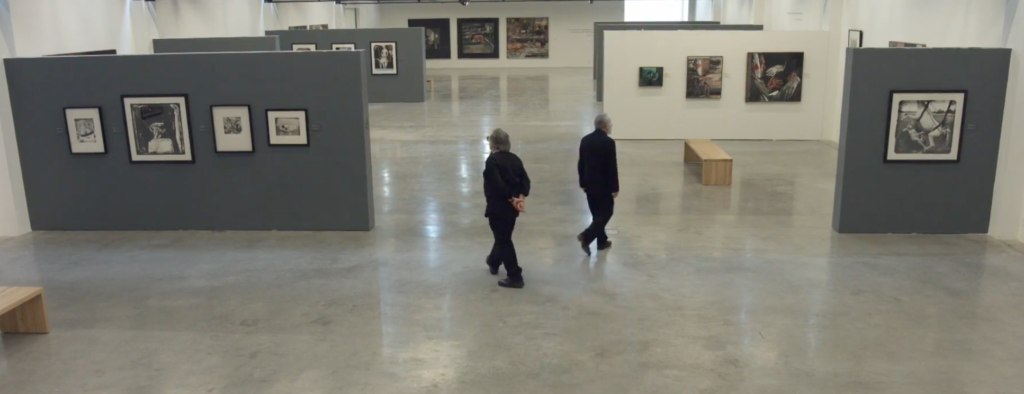
Screenshot of the brothers from Trisha Ziff’s Witkin & Witkin © 212Berlin Films, 2017.
When Joel and Jerome reunite in Mexico City in the film, it’s apparent that they’ve evolved into intrinsically different people. They’ve both lived, loved, and weathered monumental loss—Joel’s wife was interviewed for the film before she succumbed to cancer—but the “universal thought process” that they share as “two sides of the same coin,” Joel explains, is no match for their vehement drive toward individuality.
“They live in opposite realities,” Ziff concluded. “It would be arrogant of me to say this film changed them, but perhaps it allowed them to look at each other differently.”
Witkin & Witkin will screen at the National Gallery of Art in Washington, DC, at 4 p.m. on Saturday, June 16.
